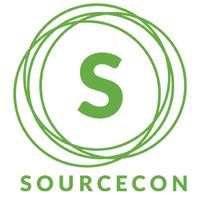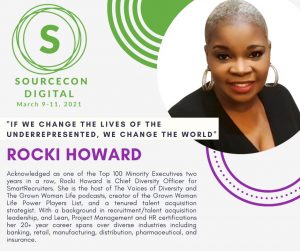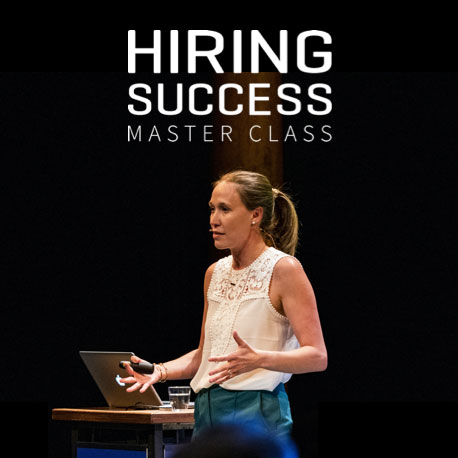If you’re sick and tired of hearing about these “unprecedented times,”. I hear you. it’s one of those terms that’s so widespread, it’s now just become white noise.
But once you get beyond the cliches created on the back of 2020 world events it’s clear that at least one foundational and fundamental aspect of our lives, our work, and our society has been changed forever. That is the unprecedented focus on diversity, inclusion and racial equality.
The renewed focus companies and employers of all sizes, in all industries, all around the world, have on diversity and racial equity is long overdue. While the concept of diversity hiring isn’t new, we’ve seen a seismic shift in how companies – and their clients and customers – have committed to championing (or at least improving) D&I initiatives not as a back office compliance consideration, but rather, as an organizational imperative that’s directly tied to the bigger business picture and bottom line results.
The result is a transformation in how companies approach diversity hiring, and how diverse employees approach companies; it’s no longer out of sight, out of mind, but front and center in our collective consciousness.

A recent JUSTCapital survey, in fact, found over 3 in 4 US workers (78%, to be exact) believe that it’s important for CEOs and senior leaders to elevate the value of diversity and inclusion not only in the workplace, but in society at large.
This overwhelming majority evidences a significant shift in public opinion and worker sentiment, but our work isn’t anywhere close to being done. In fact, with diversity and inclusion, the real work is just beginning. It is no longer enough to have good intentions. Good intentions don’t produce actual impact.
Consider that in 2019, 82% of global employers surveyed in a Catalyst survey reported dedicating budget to diversity programs and initiatives, with a median budget of around $1.2 million. That same year, according to SHRM, companies in the United States spent an estimated $8 billion on diversity training, with another billion or so being spent on external diversity consulting.
This was before we’d heard of COVID, before we saw the awful tape of George Floyd, and before diversity and inclusion emerged as perhaps the single biggest imperative facing talent organizations today. And the lack of actual impact, of return on those billions of dollars of investment, has only become increasingly clear over the past year.
It’s great to see companies reaffirm their commitment to diversity, and it’s reassuring to hear CEOs offer sweeping statements of support. But progress isn’t measured in words – it’s measured in impact.
Best Represent: The Diversity Hiring Disconnect.
Having spent a career in talent acquisition strategy, I recognize the crucial nature and critical impact that recruiting can have on an organization’s entire diversity and inclusion efforts. It’s not just part of the DEI equation.
Hiring is where DEI really starts. But there is a huge disconnect between where good intentions end at our collective organizations when it comes to diversity, and the overall impact of actually increasing representation of high caliber diverse hires across all levels, industries and job functions.
Overcoming that achievement gap will be easier than putting out a press release highlighting your company’s commitment to D&I, or adding BIPOC representation to your company and career website. It means making a commitment to trying harder, to doing better, because we all know what we’re doing is not enough.
Follow These 5 Steps To Diversity Hiring Sucess.
A recent survey by PwC found that only 16% of corporate directors rated their own companies “excellent” at recruiting and retaining a diverse workforce; even fewer (15%) felt that their companies were “excellent” at developing diverse talent at the executive leadership level.
But what makes an organization “excellent” at recruiting a diverse workforce? And how do you make sure that you’re not only excelling at hiring diverse talent, but also rate as “excellent” when it comes to developing that top talent, too?
Here are five real steps your company can really take to transform your diversity hiring initiatives and replace good intent with real business impact and real bottom line results.
1. Know Where You’re At.
Before building a complex strategy or complicated plan, you need to know not only what, exactly, you hope to achieve with your diversity and inclusion initiatives, but just as importantly, you need to take a good look at the current state of those efforts (or lack thereof), If you don’t know what’s broken, then you’ll never be able to actually piece together an impactful diversity hiring strategy.
Understanding where your company aligns with the market as well as its relative position on the diversity hiring maturity model will help you determine a baseline for your efforts, uncover where your D&I initiatives will have the biggest actual impact, and effectively allow you to a definitive, actionable plan to achieve Diversity Hiring Success in the world of work today – and tomorrow.
2. Know Who You Need.
Organizational support is your organization’s accountability framework. It ensures (to the extent permitted by the law) you have specific diversity hiring goals, training at all levels and leadership accountable from supervisor to executive level ensuring substantive progress towards the achievement of your diversity hiring goals.
According to Boston Consulting Group:
“Companies cannot simply launch programs and expect results. The success of each of these initiatives requires leadership commitment, a tailored approach that is based on the unique needs of the organization, and metrics for gauging progress. Furthermore, they need to involve their employees throughout—both in the choice of specific solutions and in assessing the impact of ongoing measures.”
Boston Consulting Group, Fixing the Flawed Approach to Diversity (2019)
Your organization’s ability to ensure substantive progress must include accountability at all levels. Business outcomes are measured by the achievement of goals and objectives. Leaders drive culture, demonstrate organizational values and priorities. Well trained leaders will exhibit the right behaviors and drive the right diversity recruitment outcomes.
3. Know Your Brand.
Diversity Brand Equity allows key stakeholders to see and experience your commitment to diversity, equity, inclusion, and belonging. It is a critical component of reputation brand management and it ensures your organization’s recruitment processes prioritize attraction, accessibility, and positive interactions for underrepresented candidates.
According to research from Glassdoor, “some 78 percent of employees expect their employers to be inclusive and treat everyone equally; applicants want an honest picture of the employment experience and culture before making a decision as to where to work.”
Your organization’s ability to allow underrepresented candidates to see themselves working for you through various interactions including language, imagery, inclusive interview experiences and your commitment to diversity across multiple touch-points will give your organization a competitive recruitment advantage.
4. Know Fair Hiring.
Fair hiring practices add perspective, consistency, and structure to the hiring process, ensuring that all hiring touchpoints are bias free. Hiring requirements are outcomes based and focused on hiring the best individual for the role.
According to a recent Forbes study, “inclusive teams make better business decisions up to 87% of the time and decision made and executed by diverse teams deliver 60% better results.”
Your organization’s dedication to an equitable hiring process is a crucial component to diversity hiring success. It is where you demonstrate your organization’s support of and commitment to diversity in a tangible way by providing a welcoming candidate experience for all, where bias is minimized, the process is consistent and the best individuals are hired.
5. Know Your Pipeline.
Sourcing strategically allows your company to hire talent at scale, on time and within budget by proactively and strategically building a pipeline of diverse talent that is aligned with your organization’s workforce plan and business objectives.
According to research from Gem, in 2019 attracting talent has been the number one concern of CEOs. 70% of the global workforce are passive candidates and 86% of the most qualified candidates for your open roles are already employed and not seeking a new job.
Your organization’s ability to identify and engage underrepresented candidates, especially for leadership roles, is a key component in your business’ ability to drive client satisfaction and achieve financial success through diverse hiring success.
And that’s the bottom line.



 Enroll in the Master Class & earn 6 SHRM credits
Enroll in the Master Class & earn 6 SHRM credits